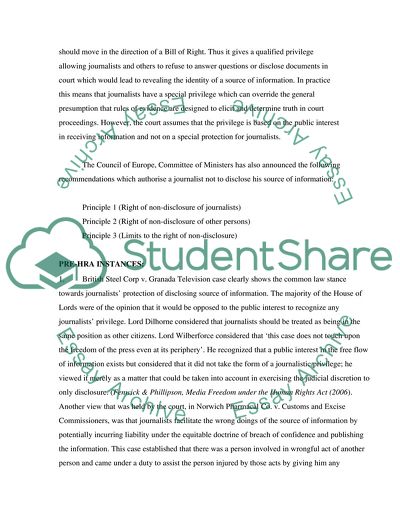Cite this document
(“Protection of Journalistic Sources Essay Example | Topics and Well Written Essays - 2000 words”, n.d.)
Protection of Journalistic Sources Essay Example | Topics and Well Written Essays - 2000 words. Retrieved from https://studentshare.org/journalism-communication/1540748-protection-of-journalistic-sources
Protection of Journalistic Sources Essay Example | Topics and Well Written Essays - 2000 words. Retrieved from https://studentshare.org/journalism-communication/1540748-protection-of-journalistic-sources
(Protection of Journalistic Sources Essay Example | Topics and Well Written Essays - 2000 Words)
Protection of Journalistic Sources Essay Example | Topics and Well Written Essays - 2000 Words. https://studentshare.org/journalism-communication/1540748-protection-of-journalistic-sources.
Protection of Journalistic Sources Essay Example | Topics and Well Written Essays - 2000 Words. https://studentshare.org/journalism-communication/1540748-protection-of-journalistic-sources.
“Protection of Journalistic Sources Essay Example | Topics and Well Written Essays - 2000 Words”, n.d. https://studentshare.org/journalism-communication/1540748-protection-of-journalistic-sources.


